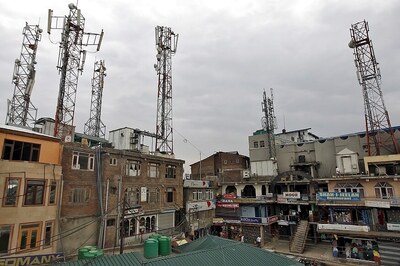
views
With blockbusters like Bharat, Kabir Singh and War, the Hindi film industry is looking to close the year on a positive note. Sanjeev Bijli, Joint Managing Director, PVR Ltd, explains the dynamics of the film and theatre business in a freewheeling chat.
Excerpts from the interaction:
How do you decide which film is suitable for which area? Who takes the final call on the number of screens and how it should be presented?
Big films like War or Bharat go pretty much everywhere. It’s a producer’s prerogative to choose the number of screens. Then there are films like AndhaDhun or Dream Girl, which might be released in 1000-1500 screens. For them, the target would be tier 1 and 2 cities. There are points of mutual discussion too. Like they (makers) would like to see the collections in small centres like Jalgaon. There we may request them to release their films in smaller places.
Are there any conflicts between the producers and exhibitors while deciding on crucial presentation points?
It’s more of a discussion than conflict. Any big film will play in the metros—Delhi, Mumbai, Bangalore, Chennai, Kolkata or even Lucknow. But when it comes to cities like Jalgaon or Satna, the producer might feel that ‘yahan business nahi hoga.’ Then we brainstorm about the cost of showcasing a film there to come up with a feasible plan.
We’re the ones building cinemas, providing right screens, latest technology, comforts. We are the conduit between the filmmakers and the audiences. As and when a movie comes, we mutually decide on the number of shows, area, everything and then we split the revenue 50-50.
How do you see the cinema exhibition business taking shape in future?
It’s going to grow. India is still very under-screened. When we rollout our plan, we see incredible opportunities in places like Meerut or Benares or Calicut or Vizag.
We only have about 7-8,000 odd screens. That makes our per capita screen count very low, especially compared to China. We are planning to start 600 new screens in a couple of years. The aim is to build 100 new screens every year.
The online ticketing has also seen a growth. Now, more than 60% of tickets are booked online. It’s close to China which is 70-75%.
You can open theatres but people are primarily paying for the content...
We don’t have control over the movies, we don’t make them, but luckily for us, both the Hindi film industry and Hollywood are producing spectacular movies. The content is getting better. We just want to ensure that these movies are shown in the way they should be. The infrastructure includes air conditioning, wider screens, better sound systems, more variety of food and beverages, everything.
Is the ever increasing number of OTT platforms likely to impact the footfall?
I am very optimistic. Over the years, cinema has survived all sorts of disruptive changes. Be it video cassettes or DVD or piracy and now it’s OTT, but can these counter the joy of going out and watching the film on a big screen?
But not every film is Avengers that you can sell in the name of cinematic experience.
There are many films like Avengers, for example The Lion King, Frozen, Aladdin, War or Mission Mangal.
Beech me choti bhi nikal jaati hain. You also have AndhaDhun, Stree, Uri. One would have thought that Dream Girl could be watched on TV but it made a lot of money. The analogy I give is that how much food can you eat at home? Kabhi toh dil karta hai na bahar restaurant jaane ka. Getting entertained is a necessity. You need movie-cation.
Is the number of cinemas directly proportional to the revenue?
Yes, because if you open cinemas in places where there were no cinemas before, people are going to watch movies.
What’s the business break-up like?
We get 65-70% from ticket sales, then around 20% comes from food and beverages, and around 10% from advertising.
And, it’s equal partnership in the end?
(Smiles) When a movie does Rs 150 crore, they get 75 and we get 75.
Follow @News18Movies for more



















Comments
0 comment